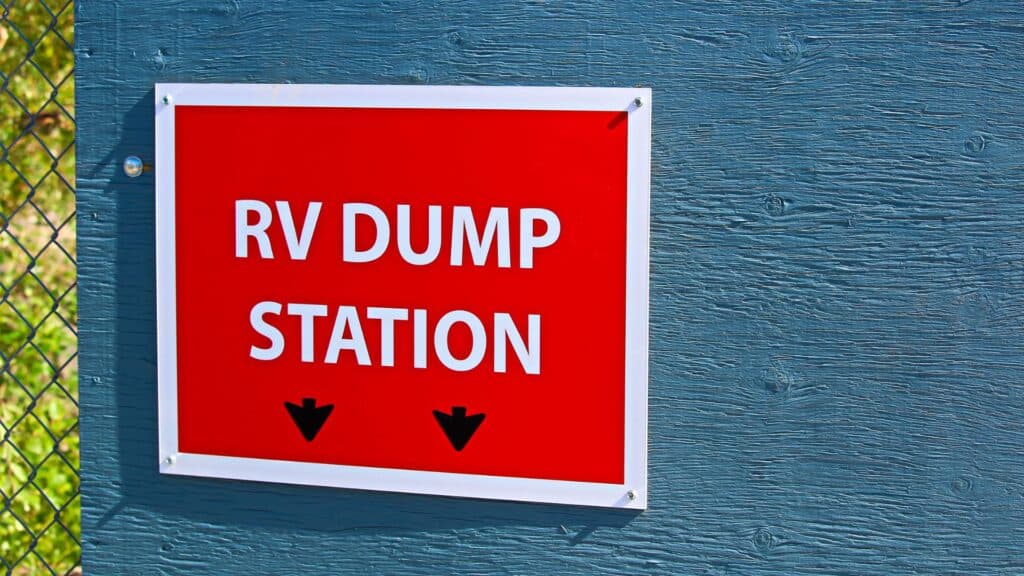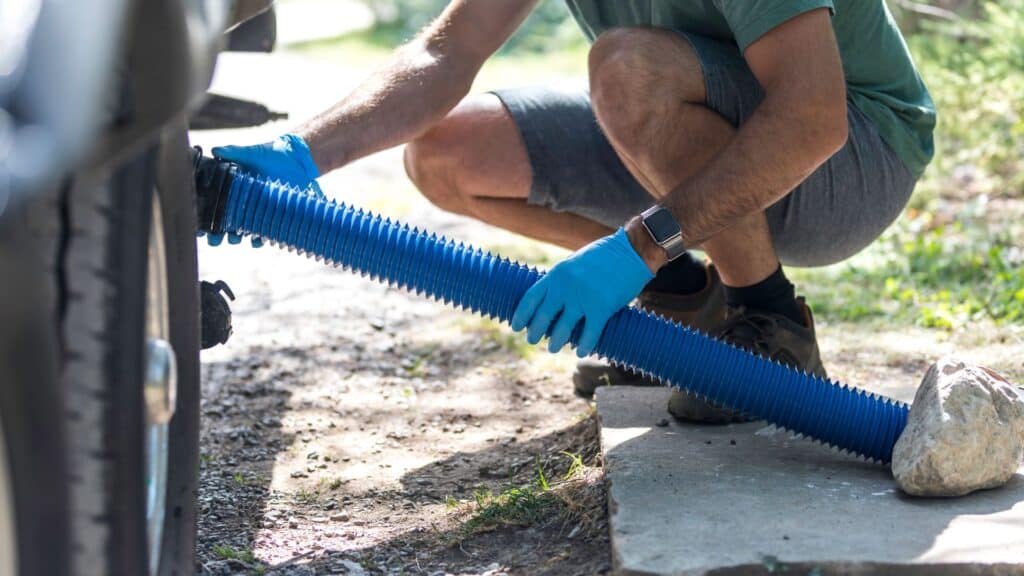Finding a Caravan Dump Point Near You: The Ultimate Guide for Safe and Responsible Waste Disposal
Finding a safe and legal way to dispose of toilet waste is crucial when travelling in a caravan or RV. Dump points provide an essential service to caravanners and RVers, allowing them to easily and responsibly dispose of their waste on the road. In this ultimate guide, we will take a closer look at public dump points in Australia, including what they are, how they are maintained, where to find them, and how to use them. By understanding dump points and using them properly, caravanners and RVers can ensure that they keep the environment clean and safe for future generations of travellers.
- What is a dump point?
- Who looks after the dump points?
- Finding caravan dump points in Australia
- How do you use a dump point?
- Difference between Grey Water and Black Water
- Can you fill up with water at a dump point?
- Extending your time between dump points
- How can you stop your toilet from smelling?
- Dump points are a part of life
What is a dump point?
Dump points provide an essential service for caravanners and RVers who need to dispose of their toilet waste safely and legally while on the road. Without dump points, travelling long distances in a caravan or RV would be much more difficult.
Dump points can be found in various locations, from most caravan parks and camping grounds to public rest areas and other public areas. They are typically located in convenient and accessible areas, making it easy for caravaners and RVers to use them.
Most dump points are fitted with facilities that allow for the easy disposal of waste. This includes a hose connection for your RV or caravan and bins for disposing of rubbish. Some dump points may also offer additional services, such as water filling or a dump point key that allows for after-hours access.
Dump points are essential for anyone travelling in a caravan or RV. By using dump points responsibly and following proper hygiene practices, you can help to ensure that they continue to serve the needs of caravanners and RVers for years to come.

Who looks after the dump points?
Dump points in Australia are usually maintained by local councils, ensuring the facilities are kept clean and in good working order. In some cases, caravan parks and camping ground operators may also be responsible for maintaining dump points on their premises.
Regular maintenance is essential for ensuring that dump points are safe and functional for all users. This includes cleaning and sanitising the facilities regularly, making any necessary repairs for broken or damaged equipment, and ensuring that bins are emptied, and waste is disposed of properly.
During peak travel periods, such as school holidays or busy summer periods, dump points may be subject to increased demand. In these cases, local councils and other responsible bodies may need to provide additional maintenance and waste disposal services to ensure that the dump points remain clean and functional.
By working together, local councils, caravan park and camping ground operators, and other stakeholders can ensure that dump points are well-maintained and continue to serve the needs of caravanners and RVers across Australia.
Finding caravan dump points in Australia
Finding dump points in Australia has never been easier, thanks to a range of digital and print resources that list the locations of dump points across the country. Some of the most popular resources include:

- The Camps Australia Wide guide book, which is a comprehensive guide to camping and caravanning in Australia that lists the locations of dump points, as well as camping grounds, caravan parks, and other useful resources.
- The Wikicamps app, which is a popular smartphone app that lists the locations of dump points and other useful resources for caravanners and RVers. The app is constantly updated by users, making it a reliable and up-to-date resource.
- The Dump Point Finder website, which is an online database of dump points across Australia. The website is free to use and allows users to search for dump points by location or by other criteria such as availability of water or dump point type.
- Caravan Parks, Why not stay in a caravan park for your last night that offers a dump point free of charge
Using these resources, caravanners and RVers can plan their trips and know precisely where to dispose of their toilet waste safely and legally. This makes travelling in a caravan or RV much more convenient and enjoyable, as it removes the stress and uncertainty of finding somewhere to dispose of waste on the road.
How do you use a dump point?
Using a dump point is crucial to maintaining good hygiene when travelling in a caravan or RV. Fortunately, it’s a straightforward process that can be completed in a few easy steps.
First, park your caravan or RV in the designated area close to the dump point. Then, connect the waste hose to the outlet on your vehicle. Ensure it is securely and properly connected to avoid leaks or spills. Next, open the valve to empty the waste from your toilet and grey water tanks into the dump point.
It’s essential to be patient when emptying the tanks, as it can take several minutes for all the waste to flow out completely. Once everything has been emptied, rinse the tanks and the hose with fresh water to clean and sanitise them. This will also help to flush out any remaining waste that might be stuck to the walls of the tank or in the hose.
Finally, dispose of any rubbish in the bins provided and ensure that the area around the dump point is left clean and tidy. By following these simple steps, you can help to ensure that dump points remain clean and functional for all users.

Difference between Grey Water and Black Water
Septic systems are commonly used to manage wastewater for caravans or camper vans that are not connected to a public sewage system. These systems are designed to treat and dispose of all types of wastewater, including greywater and blackwater.
Regarding caravan or campervan systems, it is important to differentiate between grey water and black water because they require different treatment processes.
Grey water is the wastewater from the shower, sink, and cleaning. It is relatively clean and may contain soap, shampoo, and detergent traces. On the other hand, black water is the wastewater from the toilet and contains human waste, toilet paper, and other organic matter.
Grey water can be treated and safely disposed of using environmentally-friendly cleaning products and filtration systems. Many camping sites and caravan parks also have wastewater dump stations for caravans or camper vans.
However, black water needs to be treated using chemical or composting systems or a septic system designed explicitly for black water. Without proper treatment, black water can contaminate groundwater and cause health hazards.
Can you fill up with water at a dump point?
While most dump points in Australia are designed for waste disposal only, some also provide water-filling services for caravans and RVs. This can be a real convenience for travellers who need to top up their freswater tanks, especially in remote areas where other water sources may be scarce.
However, it’s important to note that not all dump points provide this service, so it’s worth checking before you arrive. Some dump points may have a separate tap or hose connection for water filling.
If the dump point you are using does not offer water-filling services, don’t worry. There are plenty of other locations where you can fill up your water tanks, such as campsites, caravan parks, and dedicated water-filling stations. Many of these locations are listed in the same resources that list dump points, such as the Wikicamps.
Extending your time between dump points
Extending the time between visits to a dump point can be a real convenience for those travelling in a caravan or RV. By taking a few simple steps, you can help conserve water and reduce the amount of waste you generate, allowing you to go for longer between visits to a dump point.
One of the most effective ways to extend the time between visits to a dump point is to conserve water wherever possible. This can include using water-saving devices and techniques, such as taking shorter showers, washing dishes in a basin rather than under running water, and turning off the tap while brushing your teeth.
In addition to conserving water, using chemical treatments in your toilet cassette or holding tank can also help to extend the time between visits to a dump point. These treatments help break down solids and reduce odours, making managing your waste on the road easier.
Finally, it’s important to be mindful of what you’re putting into your caravan or RV’s water tanks. By avoiding solid waste and non-biodegradable materials, you can reduce the amount of waste you generate and help keep your tanks and hoses in good working order.
How can you stop your toilet from smelling?
It’s important to manage your waste responsibly to avoid unpleasant odours. To do this, it’s best to use chemical treatments specifically designed for toilet cassettes and holding tanks. These treatments help to break down the waste, reduce odours, and keep any nasty smells at bay.
In addition to using chemical treatments, another effective way to prevent unpleasant odours is by emptying the toilet cassette or holding tank regularly. This helps to avoid a build-up of solid waste and prevents unpleasant smells from developing.
Finally, it’s worth being mindful of what you put into the tank in the first place – try not to pour anything other than water down the drain, as this can also contribute to odour problems. Additionally, be sure only to use biodegradable soaps and cleaning products in order to keep the environment clean and safe.
Dump points are a part of life
For the avid caravanner or RVer, dump points are an essential part of life on the road. But don’t worry – with all the resources available these days, the easiest way to find and plan your trips around them.
You can help ensure that dump points remain clean and functional for years to come by understanding how to use them properly and maintaining good hygiene practices – no one wants to be stuck at a smelly station!

